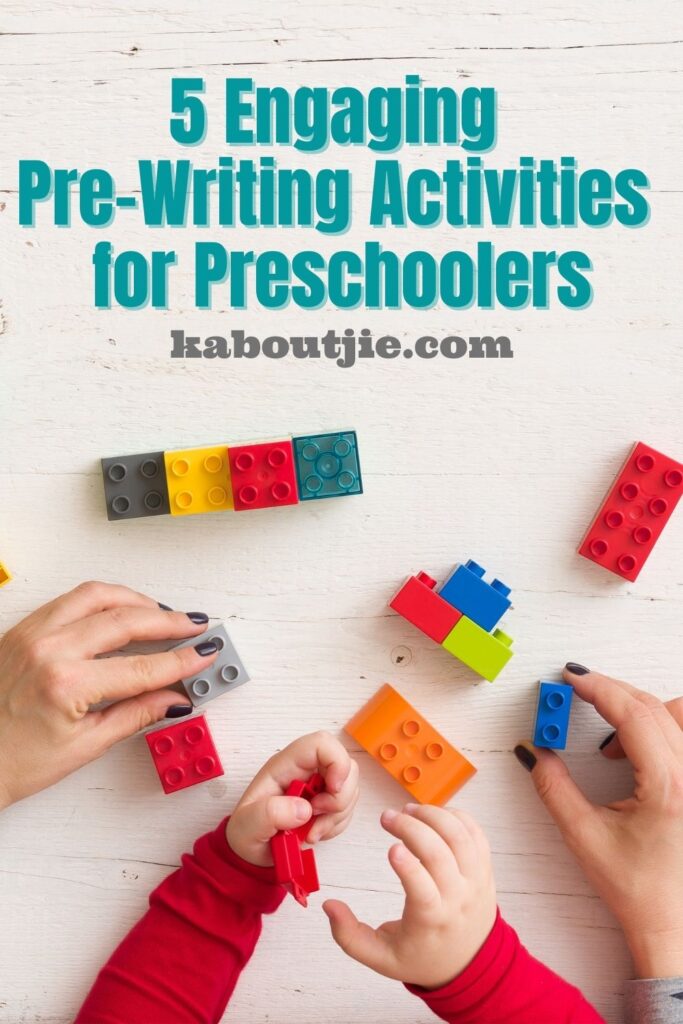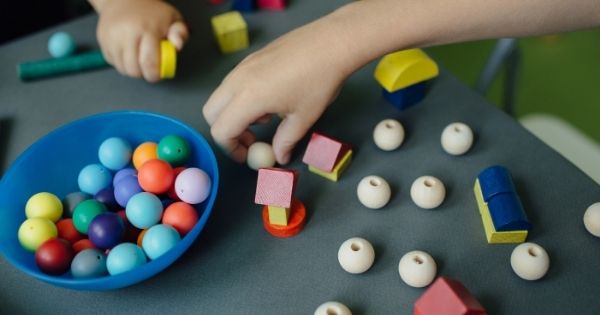The intent behind pre-writing activities is to help a child gain better pencil control and learn letter formation. These activities mainly focus on the foundational competence required for children to write. For example, parents should consider developing their child’s motor skills, grip control, and bilateral coordination before teaching a child to write. It will prove to be a key in forming strong writing basics.
In the era of technology and screens, the importance emphasized on penmanship is dwindling. Apart from boosting confidence, healthy writing skills can be instrumental in forming a child’s mental wellbeing and sensory capabilities. Read on to find out about 5 simple pre-writing activities your child can do at home or an early learning center.

-
Sand or Salt Tray Drawing
This is a creative way to let your child practice forming lines and trace letters without too much pressure to perform. The child can use a small paintbrush or a wooden stick to draw, and even using a finger is fine in the early stages. This activity is a calm and relaxing experience for the child to learn sensory motions required to draw individual letters.
-
Lego Blocks
Parents need to remember that these activities need to be appealing for preschoolers. If your kid cannot get enough of building blocks, then direct that energy to good work. Use printable letter cards and ask your child to replicate them. This can prove beneficial in learning alphabet formation and create familiarity with individual letters. You can even use this technique to teach them number formation.
-
Scribbling Vertical Surfaces
How many parents have caught their toddler enthusiastically scribbling across hallway walls? If you are concerned that the walls will look untidy, provide them with a similar alternative. Provide easily accessible hanging chalk boards and whiteboards for them to scribble on.
You can even hang thick chart papers along the wall, providing them with ample canvases to draw on. Scribbling on vertical surfaces will test their motor skills and muscle development. It also enhances eye-hand coordination which is an essential trait for writing.
-
Play-Doh
Play-Doh is an underrated tool to teach children basic writing skills. When children are rolling the dough or squishing it into balls, they are testing their motor strength. Just playing with the dough is essentially an exercise that teaches a child to muster dexterity in their hands.
We encourage parents to use Play-Dough for letter formation activities. For that, you choose a letter to make and see if your child can replicate it by using Play-Dough strings. If it proves to be a little challenging for your child, you can assist them by writing a letter on paper and letting them arrange the dough on top to match.

-
Sliding Beads into a String
This is a simple exercise with great rewards. It encourages concentration, pincer grasping, and eye-hand coordination. Furthermore, a child can practice their hand muscles as they grab the bead and try to cross a string along with it. Parents need to make sure that beads do not cause a choking hazard. Either execute this activity under supervision or use bigger beads.
 Kaboutjie SA Mommy Blogs by Lynne Huysamen
Kaboutjie SA Mommy Blogs by Lynne Huysamen





This is really something I should implement with my toddler. The sooner the better. Very useful tips.
Both my boys love Legos!
I am going to teach them the sliding beads onto a string this weekend. Family time!
I lov this and its so important to start as early as possible ,will be fun too
Love this thank you for sharing. It will definitely help us with our “homeschool practices”